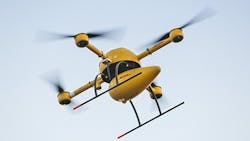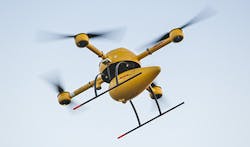Are You Up to the Challenge of Omni-Channel?
For years, manufacturers have been turning to third-party logistics providers for help in taking on tasks the manufacturer either can’t do (few companies these days maintain private fleets of trucks, so it makes good business sense to outsource transportation management to a 3PL) or doesn’t want to do (e.g., bar coding). So it should come as no surprise that as the latest buzzword in supply chain management—omni-channel distribution—gains in popularity, manufacturers and their retail partners are turning again to 3PLs to figure it all out for them.
Trouble is, the 3PLs themselves are still trying to sort out exactly what omni-channel is all about. And in fact, the 3PLs are in the same position as their potential customers—most companies’ existing infrastructures simply aren’t able to support a true omni-channel.
With IndustryWeek serving as a media partner of the 2015 3PL Study, conducted by Penn State University, Capgemini Consulting, Korn/Ferry International and Penske Logistics, I moderated a panel at the recent CSCMP 2014 conference in San Antonio, Texas, where the challenges of omni-channel were a key focus of the discussion. The study, which includes responses form more than 770 companies, points to a huge chasm between what consumers are asking for in the marketplace (basically, they want to be able to purchase something any hour of the day, 24/7/365, whether in a store or online; they want it in their hands within a day or two, max; and they want it delivered free, preferably, or for next-to-nothing) and what manufacturers and retailers are prepared to deliver (in some cases, the bare minimum). Most companies, when you get right to it, are sitting on their hands and taking a “wait-and-see” approach.
That’s where the 3PLs come in… or not. As we saw last Christmas, when consumers waited till the last possible second to order holiday gifts from ecommerce merchants (notably, Amazon), it proved to be too much for the likes of UPS and FedEx to handle all the deliveries, even when white-collar workers were (so the story goes, at least) brought in to pick items in warehouses, load trucks and planes, and otherwise provide as much manpower as possible to get the goods delivered on December 24. But with a well-publicized shortage of truck drivers already leading to numerous kinks in the supply chain, the flood of last-minute orders proved that companies still have a ways to go before omni-channel evolves into a consistent flow-through operation.
One-third (33%) of the respondents say point-blank that they are not prepared to handle omni-channel right now. And only 2% rate themselves as “high-performing” in the omni-channel space, which is rather eye-opening since how often do you hear companies admit they’re NOT ready for prime-time?
Some of the strategies that companies are at least trying out, with varying levels of success, include home delivery from local stores, Sunday delivery and locker pick-ups. Technology is being adapted to and tried out in omni-channel situations, such as mobile apps and RFID, with the goal of helping retailers avoid stock-outs by collaborating up to the minute with their suppliers to ensure that products will be available to anybody with an open wallet. And then of course, there are the delivery drones. And before you scoff, consider that DHL has just announced plans to have its parcelcopter deliver medical goods in Germany.
“As customers continue to demand more from retailers and ultimately from 3PLs, it is likely that the 3PL business model will evolve further,” says Shanton Wilcox, vice president of supply chain management with Capgemini. “If companies continue to creatively invest in omni-channel fulfillment solutions and embark on new partnerships, these new solutions have the potential to alter the way existing 3PLs do business.”
About the Author
Dave Blanchard Blog
Senior Editor
Focus: Supply Chain
Email: [email protected]
Follow on Twitter @supplychainDave
Call: 216-931-9794
Contributing Editor Dave Blanchard provides the IndustryWeek audience his expertise in lean supply chain, reporting on topics from logistics, procurement and inventory management to warehousing and distribution. He also specializes in business finance news and analysis, writing on such topics as corporate finance and tax, cost management, governance, risk and compliance, and budgeting and reporting.
Dave is also the chief editor of Penton Media’s Business Finance and editorial director of Material Handling & Logistics.
With over 25 years of experience, Dave literally wrote the book on supply chain management, Supply Chain Management Best Practices (John Wiley & Sons, 2010), and is a frequent speaker at industry events. Dave is an award-winning journalist and has been twice named one of the nation’s top columnists by the American Society of Business Publications Editors.
Dave received his B.A. in English from Northern Illinois University, and was a high school teacher prior to his joining the publishing industry. He is married and has two daughters.


